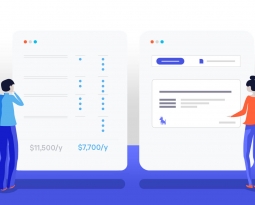
Health Insurance Terms
Health Insurance Terms
You likely know that health insurance is important to your livelihood, but not all insurance plans are created equal. There are an overwhelming number of options, but the good news is this means there is a perfect plan to match your health needs and financial situation. TREK will help you sort through these plans efficiently and effectively.
In order to understand the main differences between health plans, there are a few tricky pieces of “insurance lingo” that are helpful to define.
KEY TERMONOLOGY:
Premium: You pay this amount each month to have your plan regardless of whether you “use” it or not.
Out-of-pocket expenses: These are amounts you will pay, in addition to your premium, if you require medical care. There are four key terms that define how you’ll pay for medical expenses throughout the year: Deductibles, Coinsurance, Copays, and the Maximum Out-of-Pocket Amount. Below, we describe each and explain what they mean for you
- Deductibles: The amount you pay for health care before your insurance kicks in. For example, if your deductible is $1,500, you will pay the first $1,500 in medical bills out of your own pocket. Deductibles are cumulative over the course of a calendar year – each time you pay a small bill, it counts towards your deductible. Once you’ve reached your deductible, your insurance will begin to pay the majority of medical expenses. Each year on January 1st, your deductible resets and you start all over.
- Coinsurance: The percentage of the bill you pay. After you have paid your deductible, your insurance company will cover the majority of your health care costs and you are only responsible for a “coinsurance” portion. For example, suppose your plan has 20% coinsurance, you’ve already paid your deductible, and you need a $10,000 surgery. You would pay a maximum of $2,000 and your insurance would pay the rest.
- Copayments: A flat-fee you pay for treatment. Copays are a type of coinsurance, only they are a flat-fee rather than a percentage. You usually pay copayments when you check-in at a doctor’s office or other medical facility (unless you’re receiving free preventive care services). A copay is often a small amount (like $20 for a typical doctor’s visit).
- Maximum Out of Pocket Max: This is the maximum amount you will ever pay in a year. Every time you spend money on health care (in the form of deductibles, copayments, and coinsurance), it counts towards your maximum out-of-pocket. Once you reach this amount, your insurance company will pay the full cost of any covered medical service as long as you keep paying your premium.
TREK is your resource and trusted adviser! Need a second opinion of your group plan/individual plan? Now is the time! It may be worth your time to call TREK Insurance Group, LLC. I love helping people! TREk @ Info@TrekInsuranceGroup.com or by phone: 602.859.1377.
Looking forward to the chat!








